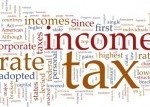 How To Retire Rich; Time Tested Strategies To Beat The Market And Retire In Style by James O’Shaughnessy
How To Retire Rich; Time Tested Strategies To Beat The Market And Retire In Style by James O’Shaughnessy
How to Retire Rich is a an easy-to-read book about investment strategies that will help you to reach your retirement goals. The author, James O’Shaughnessy, is a mutual fund manager and an experienced investor who has studied the history of the market for the past 45 years. Based on in-depth research, he has developed solid investment strategies and has shared them in his book.
is a an easy-to-read book about investment strategies that will help you to reach your retirement goals. The author, James O’Shaughnessy, is a mutual fund manager and an experienced investor who has studied the history of the market for the past 45 years. Based on in-depth research, he has developed solid investment strategies and has shared them in his book.
He uses four different couples at different life stages to illustrate how the various investment strategies can be streamlined for every situation. By doing so, it makes it easier for readers of all ages to identify with what he is saying.
Some key points outlined in the book are that investing in the market is extremely important if you want to retire rich. Instead of being afraid of market fluctuations, the author says we should be afraid of losing purchasing power if we insist on investing in cash and other “safe” investments. Although knowing that your principal is guaranteed may give you peace of mind today, knowing that your money will be worth so much less in the future should motivate you to consider other options.
According to O’Shaughnessy’s research, the New York Stock Exchange has gone up 71% of the time in the past 45 years. He continuously emphasizes that the only way to retire rich is to invest in the market and that informed investors realize that day-to-day gyrations mean almost nothing in the long term. The important thing is to not get overwhelmed by current market fluctuations but to focus on the future and understand that the value of your investment will ultimately grow over the long term.
An interesting point in the book is that successful investing runs contrary to human nature. The author says “The reason most people don’t retire rich is that it’s simply too hard to keep their emotions in check and stay focused on the long term.” Once we are able to accept that the value of our investments will fluctuate and discipline ourselves to stay invested, we will be set up for success and will ensure that we don’t lose the purchasing power of the money we have worked so hard to save.
I would highly recommend that you read this book if you are interested in learning how to develop a solid investment strategy for your retirement. O’Shaughnessy provides practical tips on choosing individual stocks to create a portfolio. He also discusses the benefits and disadvantages of mutual funds, and provides recommendations based on historical research. It’s a book that will encourage you to stay invested in the market even in the event of a market crash or an economic downturn. Check out this book and start implementing the strategies today.
 1. Start contributing today into your RRSP for the 2010 tax year rather than waiting until the last minute to contribute. If you can’t afford a lump sum contribution, start up a preauthorized contribution that comes directly out of your bank account on the same day that you get your paycheck. By investing regularly throughout the year instead of contributing a lump sum at the RRSP deadline, your money will have more of a chance to grow for you, and will significantly impact your returns over the long term.
1. Start contributing today into your RRSP for the 2010 tax year rather than waiting until the last minute to contribute. If you can’t afford a lump sum contribution, start up a preauthorized contribution that comes directly out of your bank account on the same day that you get your paycheck. By investing regularly throughout the year instead of contributing a lump sum at the RRSP deadline, your money will have more of a chance to grow for you, and will significantly impact your returns over the long term.

 How To Retire Rich; Time Tested Strategies To Beat The Market And Retire In Style by James O’Shaughnessy
How To Retire Rich; Time Tested Strategies To Beat The Market And Retire In Style by James O’Shaughnessy